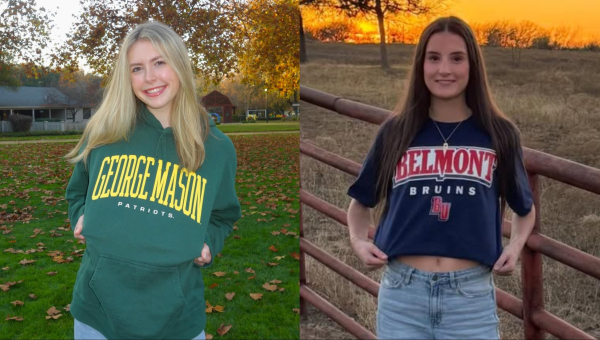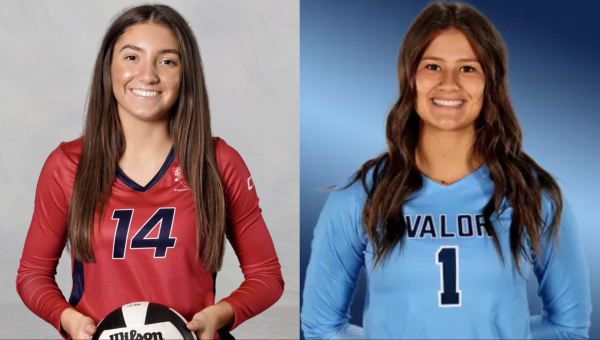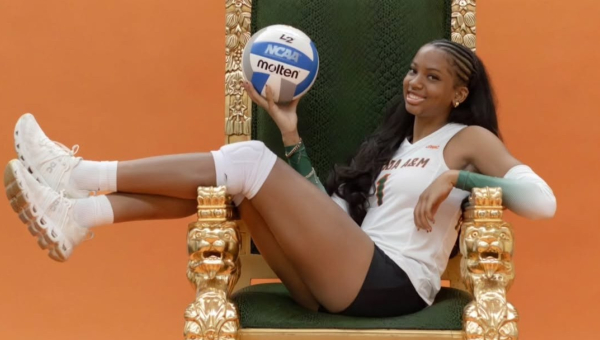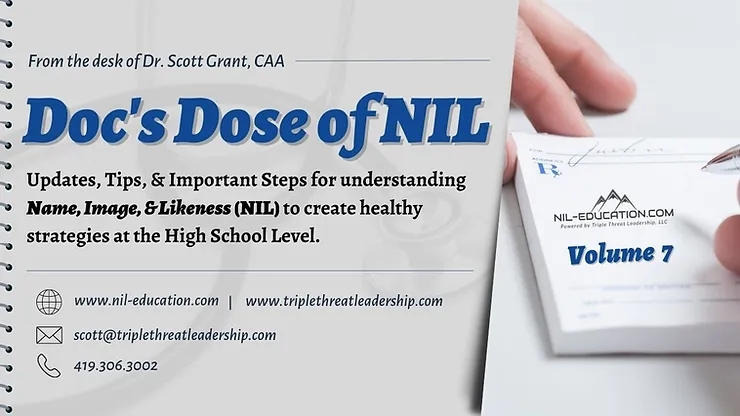
Since the opportunity for student-athletes to monetize their Name, Image, & Likeness began July 1st of 2021, many people have been outspoken over the lack of enforcement of the rules during the past 18 months
One of my favorites came from an article by @RossDellenger who interviewed an AD that stated,"if you don't enforce the rules, then you don't have rules".

One specific area of concern has always centered around booster involvement within NIL activities at schools throughout the country. I don't think this was something that many saw coming at the initial onslaught, but, as the "One Year of Name, Image, and Likeness" overview developed by Opendorse outlined, the engagement of donors increased heavily.
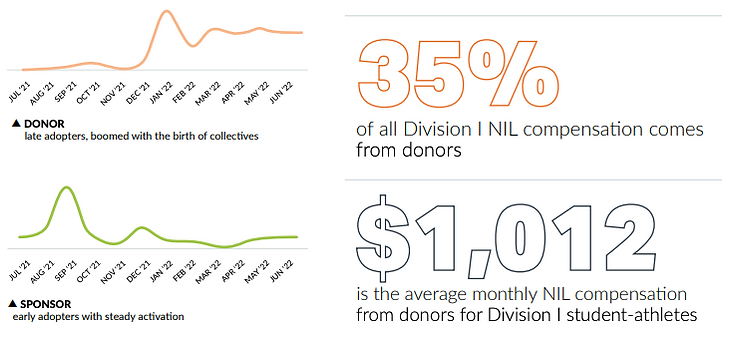
Back in May of 2022 during this increased donor engagement period primarily through the development of collectives, the NCAA approved guidelines surrounding NIL that focused on clarifying the existing bylaws that prohibit boosters from being involved in recruiting.
While many have continued to indicate the impact NIL has in the recruitment space, a report in from Sport Illustrated stated that these guidelines were intended to hopefully "jump-start the NCAA enforcement staff to investigate potential rules violations both past and future." (https://www.si.com/college/2022/05/06/nil-chaos-leaders-urging-ncaa-new-guidelines)
While these "new guidelines" didn't establish any new rules, their goal was an attempt to clarify the definition of a booster, and ensure that the prohibition of athletes receiving money as a recruiting inducement, or as a reward for their athletic performance, is a little less "grey".
Let's face it, this grey areas of NIL has seen the emergence of an entire industry as collectives continue to take shape throughout the country.
Unfortunately, since most NIL policies (even at the high school level) are written in a very broad sense, it becomes increasingly hard to decipher if some of these "policy regulations" or "policy guidelines" are being broken, or more importantly, what they actually mean in practice..
Now on to the infraction...
On Friday, February 24th, the NCAA issued its first ever known ruling in an NIL infractions case that surrounded University of Miami women's basketball players Haley and Hannah Cavinder, who transferred to South Beach from Fresno State in 2022.
The situation surrounding this infraction was connected to the incredibly strong, and publicly outspoken supporter of the 'Canes athletic program and NIL activity, Mr. John Ruiz - an attorney and CEO of LifeWallet.
If you've followed NIL at the college level you most likely have seen Miami and Mr. Ruiz under fire for their NIL activity and press, as he openly outlines many of the NIL deals with transfer student-athletes, like the one recently with Nigel Pack, a basketball transfer from Kansas State.
It's interesting that Mr. Ruiz often publicizes these deals in a way that many might steer clear of, but that's not for me to judge.
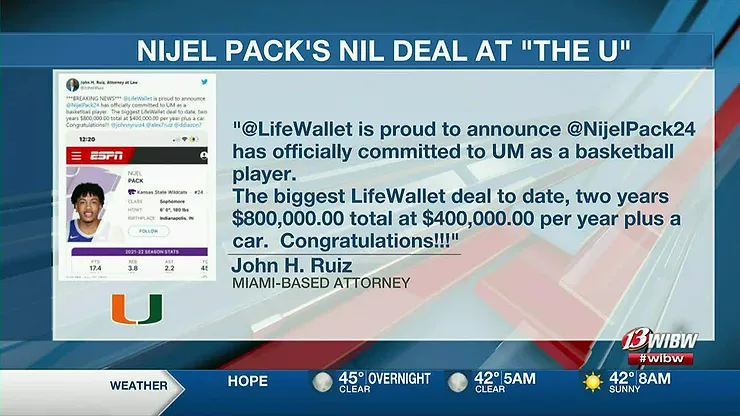
Ok - now back to the infraction.
As confirmed by Sports Illustrated,
Miami women's basketball coach Katie Meier was punished for "facilitating" a meeting between a booster and prospective athletes.... aka - Mr. John Ruiz & the Cavinder twins.
Mr. Ruiz met them earlier than allowed, and provided a "recruiting inducement" which ultimately was a free dinner at his home.
Now some of you might be saying,
Really, a free dinner? That's it?
To which I would say --- if you've never really dug into the NCAA rules and regulations, you'd be amazed at some of things you'd find, and some that are incredibly unclear.
I had a compliance officer tell me one time that the NCAA has created a fictitious world that doesn't actually exist in real life, but all college athletics programs have to figure out a way to "live" within the guidelines of that world, with their own strategies.
Kind of weird when you actually think about it.
But, as sports attorney Dan Lust stated in an article by Front Office Sports,“Of all of the people and all of the schools, it doesn’t seem like a coincidence that this is where the NCAA went after first. If there is compensation that goes from one source to an athlete, does it need the corresponding tweet to tell everybody you did it? That’s the question that needs to be asked in this arena.”
And while the infraction in and of itself carries numerous implications and a new "action" focused approach by the NCAA to punish infractions (no matter how small), you have to question whether this was somewhat pushed by the promotion of continuous NIL activity by Mr. Ruiz.
https://frontofficesports.com/the-ncaa-handed-down-the-first-nil-infraction-now-wha
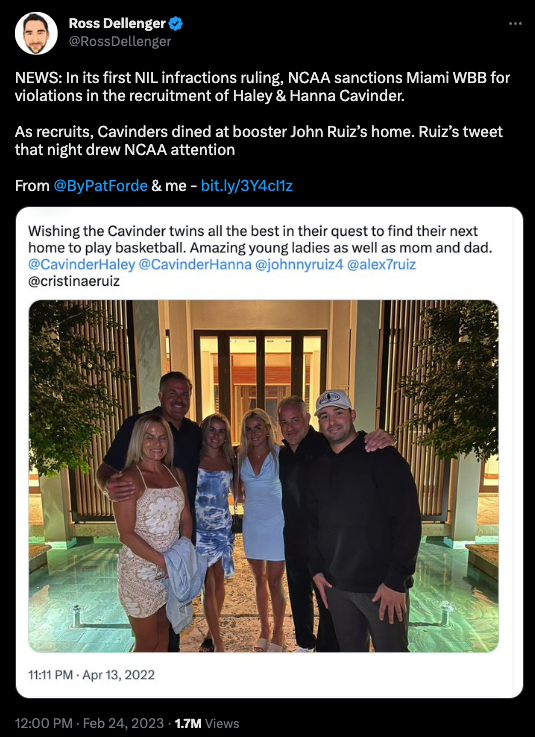
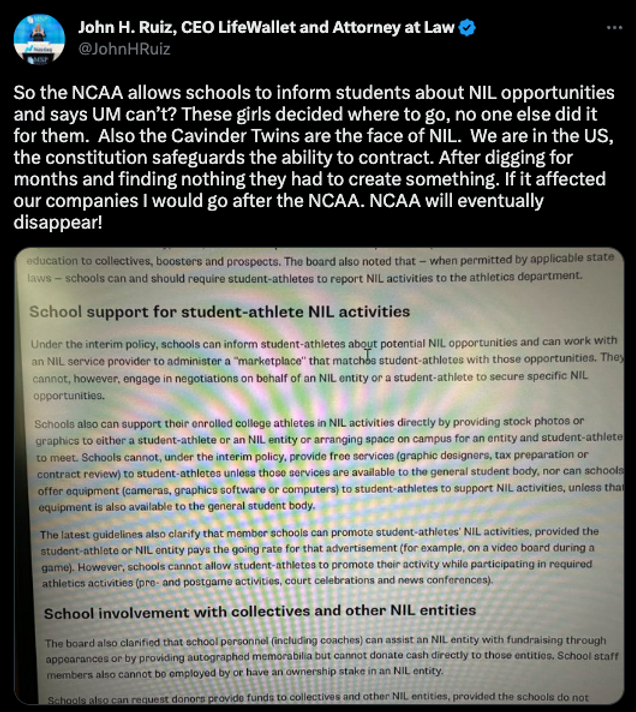
One interesting thing to note about booster involvement infractions that will continue to be enforced at the college level is that the NCAA has outwardly stated that their plan isn't to go after the student-athlete, but rather, the booster and potential school involvement.
It could mean disassociation for that booster from the school, or fines / suspensions of coaches, but the student-athletes most likely will not be punished.
Which as we enter into a season where we may see infractions at the High School level, it could be the exact opposite. Meaning, most violation language from the state high school athletic associations specifically outlines the loss of amateurism, or participation, of the student-athlete. It doesn't outline what will happen to the other individuals, which most likely will end up on a case by case basis.
With that in mind, lets dig in further to the potential IMPLICATIONS of infractions, enforcement, and policy considerations FOR HIGH SCHOOL NIL, because here's where the deeper connectivity to the High School Name, Image, & Likeness environment comes into play for me.
I completed my doctorate in educational leadership and policy studies, and my dissertation was a policy analysis of interscholastic pay to participate policies. I am an absolute policy geek, often overlaying policy analysis processes, and reading through every state high school athletic associations policies / guidelines / regulations when they are developed / implemented.
My goal in this policy analysis process is threefold -
- Figure out what the policy is saying, and how it's being developed, implemented, as well as evaluated within the respective state.
- Figure out what it's asking High School Athletic Directors / School Administrators to do as part of the policy.
- Consider the individual policy elements applications, and grey areas that ultimately will be present until let's face it, infractions occur.
While I believe every state high school athletic association is doing their best with the knowledge and support they have as they develop their policies, it's hard to try to cover everything.
Additionally at the high school level, there isn't an overarching, national governing association like the NCAA, so in essence, if all 51 high school athletic associations (50 states plus DC) would allow NIL activity, there would potentially be 51 different policies / approaches to that process.
Talk about somewhat of a mess.
And again, I don't mean that these were created with ill intentions, but rather, as we saw in the first 18 months of NIL at the college level, it's hard to know what's actually allowed, what isn't allowed, and what really is going to happen "IF A VIOLATION OCCURS."
I always wonder similar things when comparing the college & high school space:
- Will a High School State Athletic Association that approves NIL have the appropriate compliance / enforcement department to handle upholding its regulations?
- Since most High School State Athletic Association policies are built upon self-reporting from Athletic Administrators, will AD's even want to consider what the rules are or what they have to do in regards to their state's NIL policy?
I'm not sure either structure is set up with the time and resources for this.
Now let's take it a step further and look at a specific state that recently passed "guidance" for Name, Image, and Likeness tied to their Amateur Status regulation, and how some of it might play out / be interpreted differently...
**And please note I'm not targeting Pennsylvania in any way, but, as you'll notice there were some questions around their state's "first deal" that spurred some considerations that I thought were important to discuss.
PENNSYLVANIA (PIAA):
The Pennsylvania Interscholastic Athletic Association (PIAA) added a "Name, Image, and Likeness" section to their "Permissible Awards / Activities" portion of Article II - Amateur Status & Awards.
You can read the board minutes / overview here: http://www.piaa.org/assets/web/documents/BOD_Agenda/2022/December/December_2022.pdf
Their policy includes numerous restrictions that mirror NIL policies adopted by other high school state athletic associations, including a prohibition that reads:
No school or anyone employed by or affiliated with a member school, including booster clubs, coaches, collectives, administrators and alumni, may solicit, arrange, negotiate or pay for a student’s, other than their own child, use of their NIL and/or the provision of Consideration to a student for the use of their NIL.
While most of that language is common across state high school policies, the part about "alumni" and "collectives" has started to become more visible within recent state approvals.
Since the majority of NIL activity at the high school level for student-athletes (other than the elite 2%) is often developed in a hyper local approach with local community businesses, the question arises whether a business developing an NIL deal with a specific student-athlete where the owner, CEO, or even a worker engaged in the process are alumni is indeed a violation of their rules?
Based upon the interpretation of one of their first deals that took a little "questioning" on social media... the answer (& policy language) might need to be clarified by the state association further.
The day after the PIAA announced its NIL regulatory change in December, Rodney Gallagher, a star football player from Laurel Highlands inked a deal with the Pavement Group, becoming the first PA high school student-athlete to move forward in this space.
This deal seemed to be facilitated through the help of Jordan Rooney and Jaster Athletes, which would be allowed as the PIAA does not specifically outline anything in regards to the utilization of agents.
Some states do specifically include language that either allows or prohibits agent utilization, which is extremely important for student-athletes and families to understand.
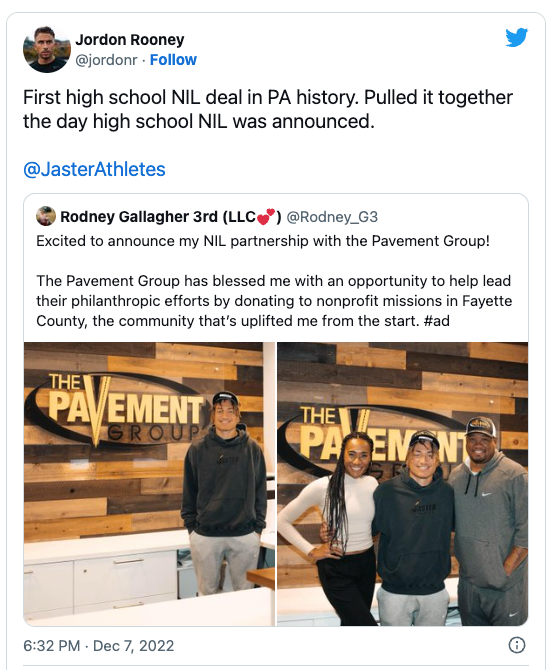
After the announcement became public on social media, a question came from a tremendous lawyer in this space, Ryan Whelpley , clarifying whether that deal violated the new PIAA rules because the CEO of the company was an alum.



While I'm not questioning whether this deal was on the up and up as it was facilitated by a well known agent, Jordan Rooney and one of the best NIL sports lawyers out there in Mit Winter, I'm more interested regarding how a high school Athletic Director would come to the understanding on whether a deal incorporates an alumni or not, whether that matters, and if it does, how they would have to report that (if they are required to do so?).
As a former AD at a school that I had no personal connection to, I didn't know who was an alumni.
And I definitely didn't know whether the "owner" of a company that supported our department, our teams, or our student athletes was an alumni either, if that's part of the main interpretation of the rule, or if it focuses on an employee that happens to be part of the facilitation, that's something I would need to know in regards to the policy.
And one last piece for consideration, I wonder if that business could be classified as a "booster" of that school?
If they had given money to the athletic department like many do, aren't they considered a booster, or part of their booster club?
Or do only individuals fall into the definition of a booster?
You can see where the questions continue to spiral without any real sense of clarity....
Additionally, the PIAA NIL regulations have a disclosure element that states:
Students must notify the Principal/Athletic Director if entering into any type of NIL contracts/agreements within 72 hours after entering into the agreement.
Disclosures of NIL contracts to school officials isn't unheard of, but, in working with a few states that have kicked the proverbial NIL can down the road, and one where it was voted down, a major concern was in regards to a similar disclosure element and it's application for Athletic Directors.
And here's why...
In order to "follow" that portion of the rule, a school would have to do some proactive planning and preparation, as well as asked some clarifying questions of the PIAA to make sense of what they need to do.
- What's the process for a kid notifying the principal / AD if they're intering into any type of NIL contract / agreement?
- Has the school decided who their point person (let's face it, "compliance officer") is going to be?
- As the AD or Principal, or a so-called "district compliance officer", what am I doing with this information?
- Why am I being notified? Is it to ensure that contract is not violating the amateurism bylaws?
- Am I supposed to retain some type of documentation, and if so, why?
- Am I turning that into the PIAA's compliance department? If so, why?
- What happens if a student-athlete publicizes an NIL agreement and I'm not notified within 72 hours?
- Will the student-athlete lose their amateur status for the period of one year outlined in section A?
- Do we as a school have to create a procedural process to ensure these regulations are followed, and if we choose, suspend the student-athlete for any potential violations / lack of accordance?
Now, I'm hopeful that someone within the PIAA is focusing on NIL education in regards to what this policy actually looks like in application, and is working through building a FAQ document, as well as clarifying questions specifically in regards to their NIL REGULATIONS, because I know for a fact these are things running through many of their school administrators heads from the numerous calls I receive daily.
This type of clarification can't just be handed off to a third party entity who is their NIL Education provider or consultant (which let's face it, I am one of those!).
Sure that provider/consultant can help them with the process of development, discussion of potential pitfalls / grey areas, verbiage interpretation, and a plethora of other strategic planning, but this is on them to provide the leadership.
Ultimately, I don't feel many AD's want to deal with NIL because it's just another thing that potentially changes their workload / flow, is something that they can't really control and probably have a lot of questions about, and their days are focused on immediate operational concerns such as budget issues, the bus not showing up to take a team somewhere, hiring a plethora of new coaches in numerous positions at all levels, or, frantically calling every official in their cell phone because the two they had didn't show up.
There is a lot on their plate.
Every single day.
So let's give them a little grace for being fearful of what this all means.
It's not as easy as many think, especially when the state policy lacks clarity for them.
So let's finally land this plane... because I could keep going and going.
Additionally, I was on calls last week with three different lawyers talking through a few state policies, their interpretations, potential examples, and even thoughts on a few proposed House Bills that could heavily impact what a state high school athletic association, as well as a school, can even a regulation they have falls under a classification as "limiting a student-athletes ability to participate in NIL activity".
But that's for another time.
At the end of the day, as these infractions begin to come down the pike at the college level, I'm anxiously awaiting / considering what that will look like at the high school level.
Will High School State Athletic Associations dump resources into their compliance departments to ensure their NIL regulations are followed?
Will High School AD's self report when infractions occurred based on their interpretation of their state's regulation?
Will this all turn into a he said / she said, ugly state of affairs to try to make a student-athlete ineligible by their rival / opponent / upset parent, kid, you name it.
And don't act like that doesn't happen in regards to many state high school association bylaws right now.
School Administrators need an open line of communication with their State Athletic Association and a continuous focus on clarity & understanding of these often misinterpreted regulations.
NIL deals are going to be publicized by the parties involved.
School Districts are going to lack internal processes and many won't be able to be as prepared as they need, or would like to be.
The grey areas in state policies are present and will continue to evolve.
So what happens next?
That's yet to be seen, but unfortunately for the high school level, it'll most likely be at the expense of the student-athlete, or the athletic director/school administrator of the high school.
And from my perspective, that's not good for educational based athletics.


